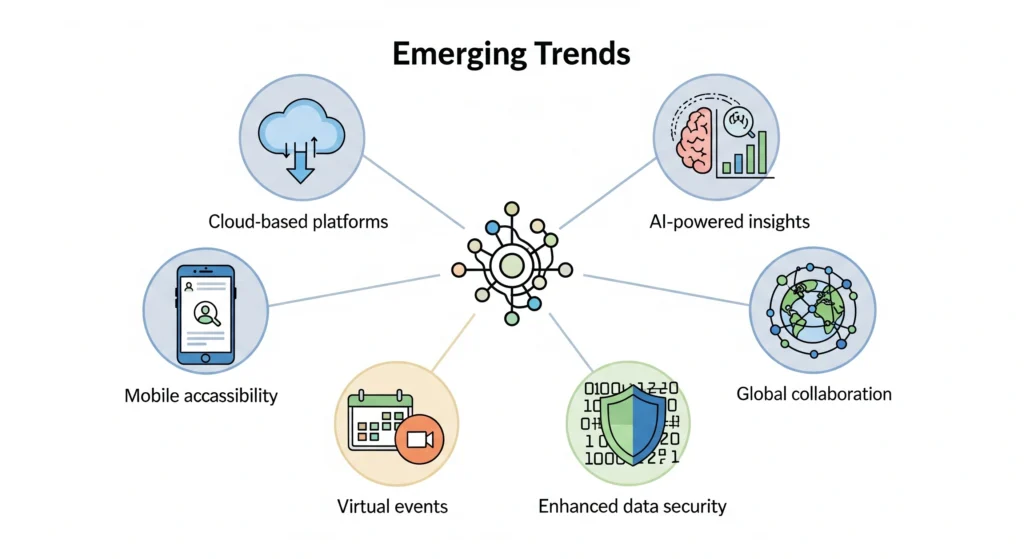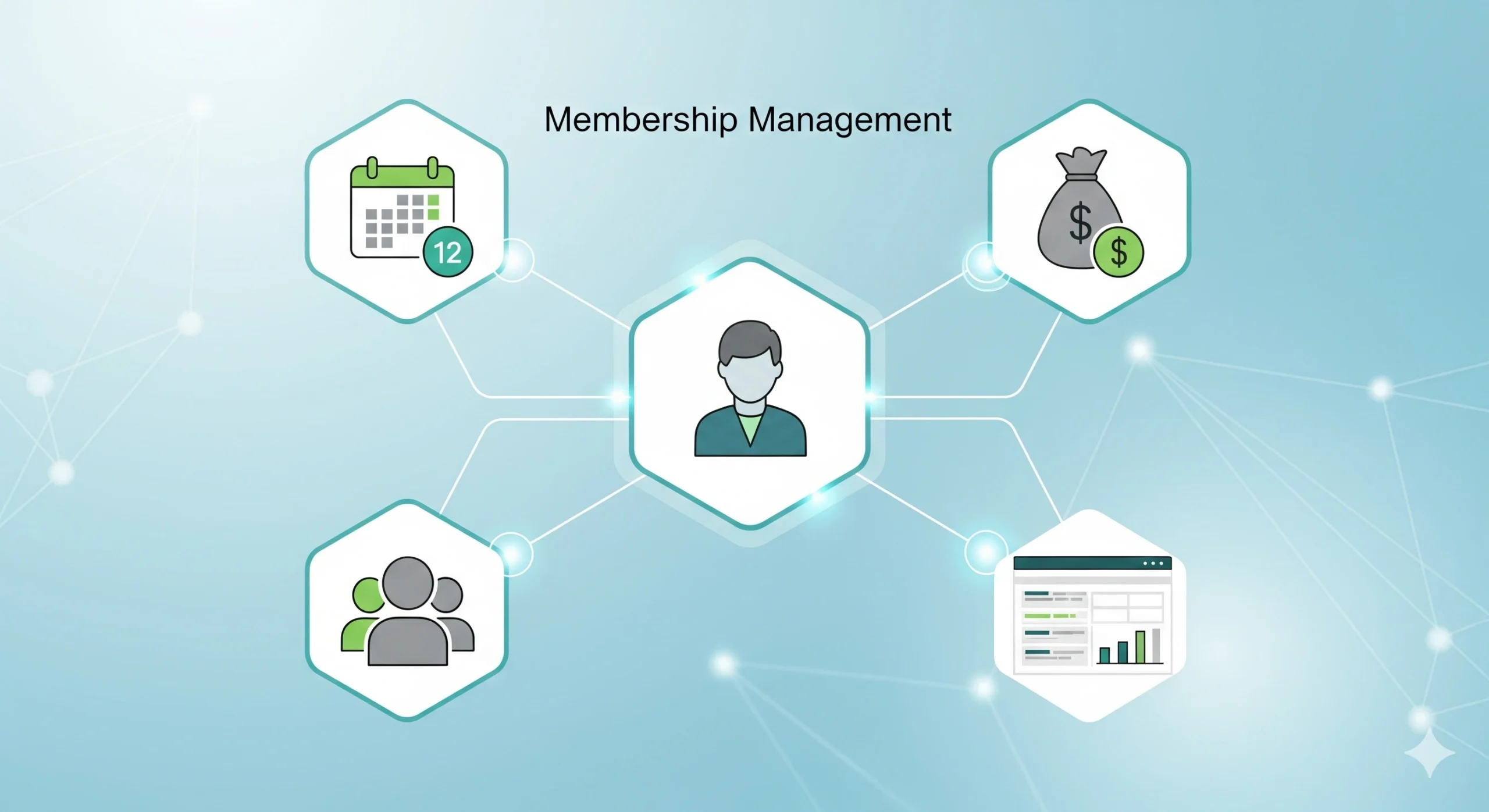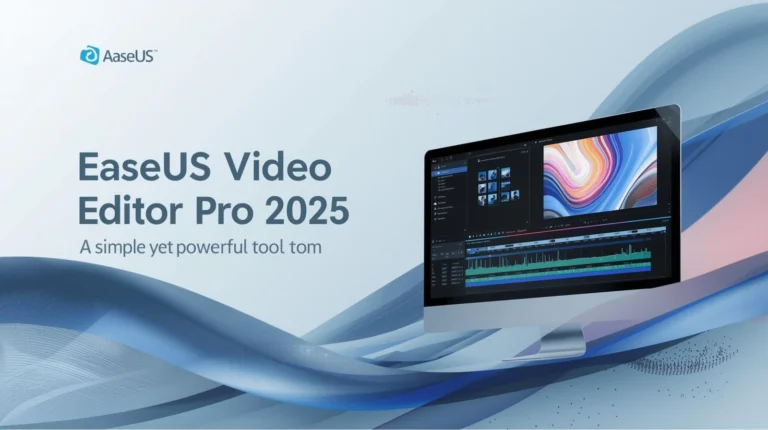Membership Management Software for Nonprofits: Streamline Operations and Engage Members
Running a nonprofit is rewarding, but managing members, volunteers, and donors can quickly become overwhelming. If your team is still relying on spreadsheets or outdated systems, it’s time to explore membership management software for nonprofits. These digital tools simplify administrative tasks, improve communication, and help you focus on what really matters: making an impact.
What Is Membership Management Software for Nonprofits?
Membership management software is a tool designed to help nonprofits organize, track, and interact with their members efficiently. From automating renewals and processing donations to managing events and communications, it replaces time-consuming manual tasks. More than just a database, it strengthens connections with your community and ensures your supporters feel valued.
Why Nonprofits Should Use Membership Software
Save Time and Reduce Stress
With limited staff and resources, automating routine tasks like membership renewals, event registration, or report generation frees up hours for mission-critical work.
Enhance Member Engagement
Members who feel appreciated are more likely to donate, volunteer, and participate in events. Personalized messaging and timely updates help your community stay connected.
Build Trust Through Transparency
Accurate reporting and donation tracking show supporters exactly how their contributions are being used, increasing trust and loyalty.
Support Growth Seamlessly
As your nonprofit expands, a scalable platform ensures your systems can handle growth without disrupting member relationships.
Essential Features to Look For
When evaluating membership management software for nonprofits, consider these key features:
Centralized Member Database: All contact info, membership history, and preferences in one place.
Automated Billing & Renewals: Reduce late payments and administrative work.
Event Management Tools: Organize, promote, and manage events efficiently.
Communication Tools: Send newsletters, updates, and reminders directly to members.
Donation Tracking: Monitor contributions, issue receipts, and analyze fundraising success.
Reporting & Analytics: Gain insights into trends, engagement, and financial health.
Integration Options: Connect seamlessly with CRMs, accounting software, and email platforms.
Benefits That Make a Real Difference
Efficiency: Save time on repetitive administrative tasks.
Stronger Relationships: Personalized communication fosters loyalty.
Data Accuracy: Reduce human errors compared to manual entry.
Cost Savings: Free staff and volunteers to focus on impact-driven work.
Scalability: Grow your nonprofit without outgrowing your systems.
Emerging Trends in Nonprofit Membership Software

Technology is shaping the future of nonprofit management. Key trends include:
Cloud-Based Platforms: Access data anytime, anywhere.
AI-Powered Insights: Predict donor behavior and suggest engagement strategies.
Mobile-Friendly Design: Reach members wherever they are.
Enhanced Security: Protect sensitive member and donor data with robust encryption.
Choosing the Right Software
When selecting a membership management system, focus on:
Ease of Use: Staff, volunteers, and members should navigate it easily.
Affordability: Choose a solution that fits your budget without sacrificing key features.
Customization: Ensure the platform can adapt to your nonprofit’s needs.
Integration Capabilities: Connect with your existing tools for smooth workflows.
Reliable Support: Responsive customer service is essential for quick problem-solving.
Tips for a Smooth Implementation
Train Your Team: Ensure everyone knows how to use the software effectively.
Start Small: Begin with core features before exploring advanced tools.
Gather Member Feedback: Understand how the platform improves their experience.
Review Regularly: Make sure the system continues to meet organizational goals.
The Future of Membership Management
Expect smarter, more interactive tools:
AI-Personalized Communications: Deliver tailored updates to each member.
Blockchain Transparency: Secure donation tracking and accountability.
Virtual Reality Fundraising: Create immersive experiences for supporters.
Global Collaboration: Connect with nonprofits worldwide through integrated platforms.
Final Thoughts
Strong relationships are the heart of every nonprofit. By adopting the right membership management software for nonprofits, you can streamline operations, boost engagement, and provide transparency to donors and members. This allows your team to focus on what really matters: making a lasting impact in your community and driving meaningful change.
FAQs
1. What is membership management software for nonprofits?
Membership management software for nonprofits is a digital tool that helps organizations track members, manage donations, handle event registrations, and communicate efficiently. It automates administrative tasks so nonprofits can focus on engaging their community and achieving their mission.
2. Why do nonprofits need membership management software?
Nonprofits need membership management software to streamline operations, save time, improve member engagement, maintain accurate records, and ensure transparency for donors. It also helps organizations scale without overwhelming staff or volunteers.
3. What are the key features of nonprofit membership software?
Key features typically include a centralized member database, automated billing and renewals, event management tools, communication channels, donation tracking, reporting and analytics, and integration with other software like CRMs or accounting systems.
4. How does membership software improve donor and member engagement?
The software allows nonprofits to send personalized communications, updates, and reminders, keeping members informed and appreciated. Engaged members are more likely to donate, volunteer, and participate in events, strengthening long-term relationships.
5. Can membership management software support nonprofit growth?
Yes. Scalable membership software can handle increasing numbers of members, donations, and events, allowing nonprofits to expand operations without losing efficiency or engagement.






